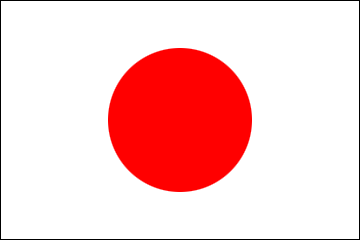Let’s Daimyo Gyoretsu! A Parade Perspective in San Francisco
2017/5/15
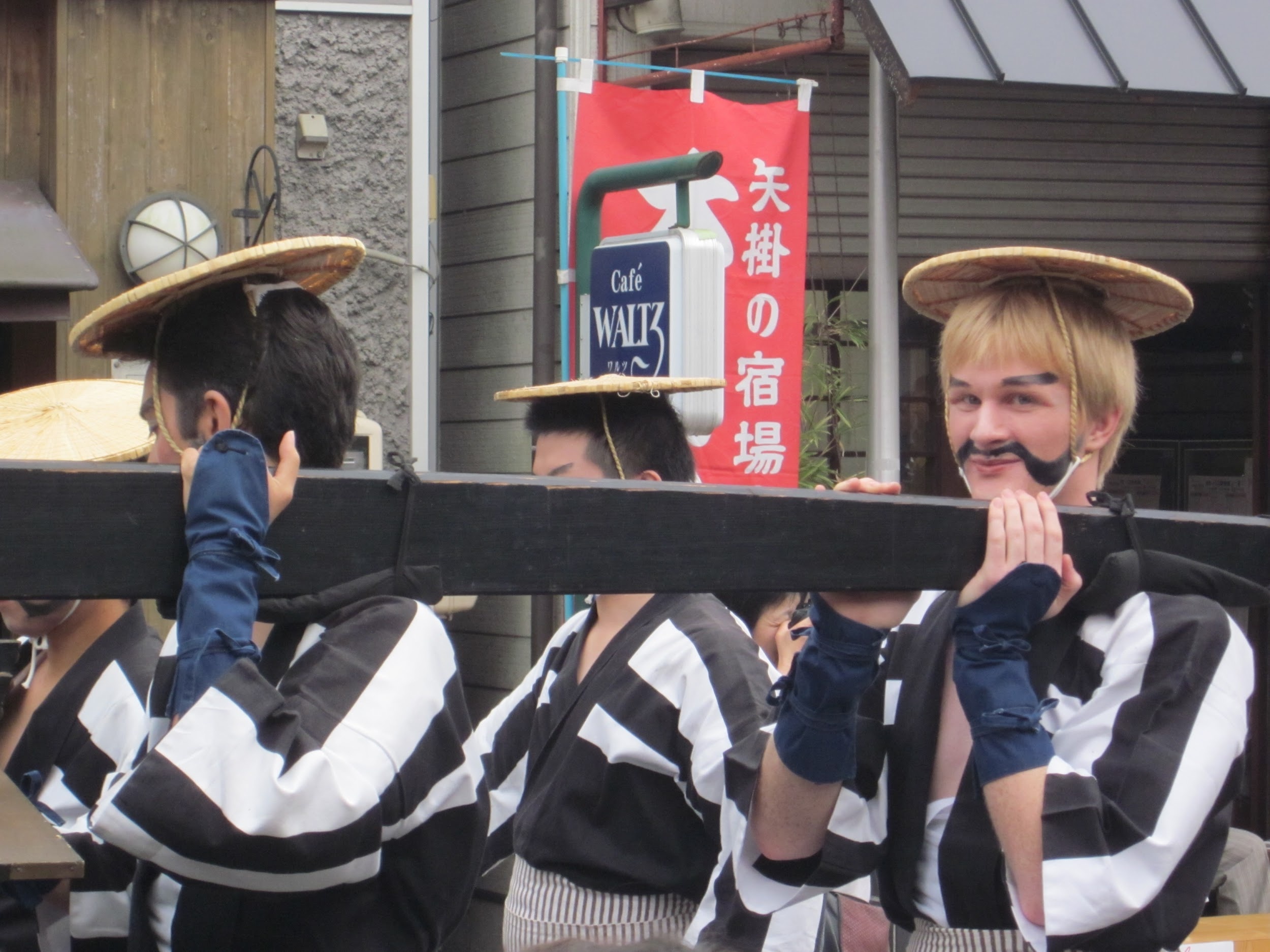 Gavin in the Yakage procession in 2011
Gavin in the Yakage procession in 2011
By Melody Brown
Melody Brown is a former participant in the Japan Exchange & Teaching (JET) Program. Melody taught English as an Assistant Language Teacher in Okayama Prefecture from 2011 to 2013.
“Hey! Soooo did you see this?”

My fellow JET alum friend sent me this message one day. I clicked on the link he shared and squealed! The Daimyo Gyoretsu (aka samurai parade) from Yakage, Japan will be featured in the San Francisco Cherry Blossom Festival to celebrate its 50th anniversary. I’m completely ecstatic! Why? Well, let’s take a quick step into some history.
From 2011-2013, I was a JET Programme Assistant Language Teacher (ALT) in Kibichuo, Okayama. Yakage, another town in Okayama, was where my then boyfriend (now husband) Gavin was an ALT. Each November, I would watch Gavin and other townspeople participate in the annual Yakage Daimyo Gyoretsu parade, which is a huge deal in this town. It started back in the Edo period when the daimyos, or feudal lords, were required to travel to the capital periodically. Yakage was a major post for the daimyo and other samurai on their expedition. Thus, to commemorate this historical occasion, the people of Yakage put on an annual parade and reenact the journey.
Melody Brown is a former participant in the Japan Exchange & Teaching (JET) Program. Melody taught English as an Assistant Language Teacher in Okayama Prefecture from 2011 to 2013.
“Hey! Soooo did you see this?”

My fellow JET alum friend sent me this message one day. I clicked on the link he shared and squealed! The Daimyo Gyoretsu (aka samurai parade) from Yakage, Japan will be featured in the San Francisco Cherry Blossom Festival to celebrate its 50th anniversary. I’m completely ecstatic! Why? Well, let’s take a quick step into some history.
From 2011-2013, I was a JET Programme Assistant Language Teacher (ALT) in Kibichuo, Okayama. Yakage, another town in Okayama, was where my then boyfriend (now husband) Gavin was an ALT. Each November, I would watch Gavin and other townspeople participate in the annual Yakage Daimyo Gyoretsu parade, which is a huge deal in this town. It started back in the Edo period when the daimyos, or feudal lords, were required to travel to the capital periodically. Yakage was a major post for the daimyo and other samurai on their expedition. Thus, to commemorate this historical occasion, the people of Yakage put on an annual parade and reenact the journey.
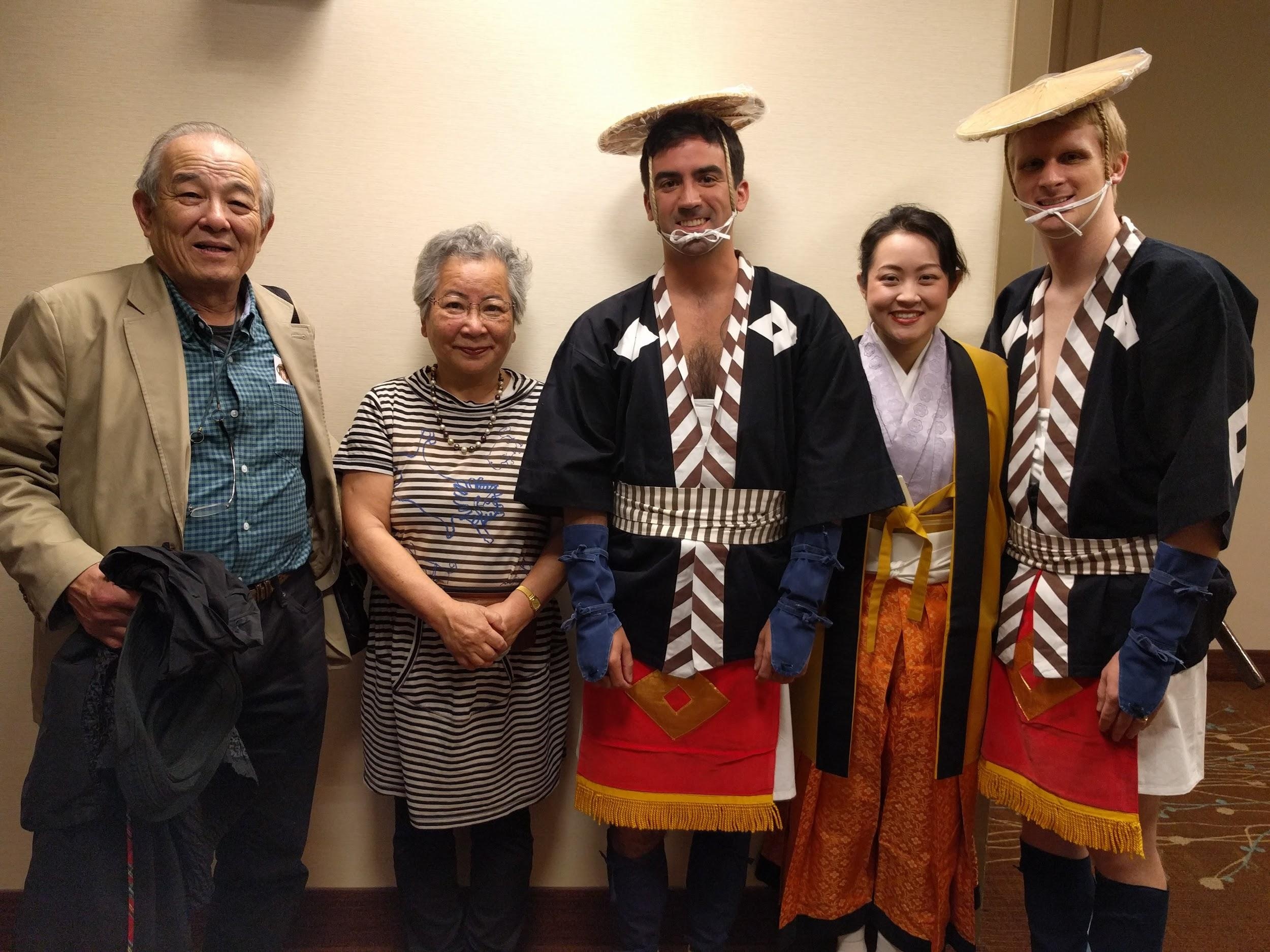 Reuniting with Mama-san and Papa-san
Reuniting with Mama-san and Papa-san
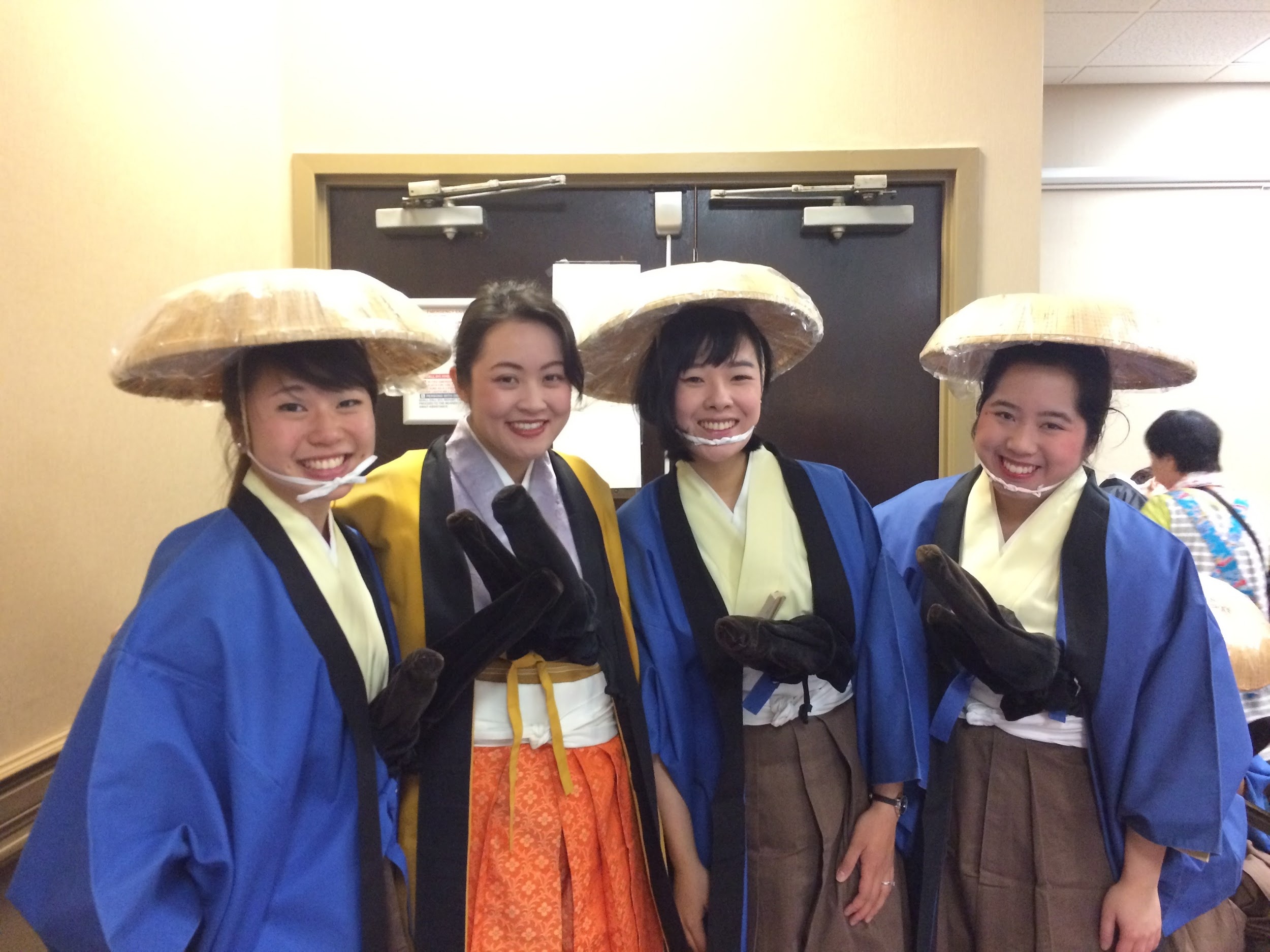 Melody with the other Samurai
Melody with the other Samurai
Fast forward to present day, my husband and I were thrilled to see the small town of Yakage be represented in one of the largest cities in the world. We immediately signed up to be a part of this parade that would happen on Sunday, April 16.
When the day finally arrived, Gavin and I met other fellow volunteers in SF to get ready. It instantly felt like a blast from the past as we were completely immersed in Japanese culture. The Japanese people, the costumes, the signs...everything reminded us of our time in Japan. To our surprise, Gavin was able to reunite with his old friends, whom he tenderly referred to as mama-san and papa-san. With a couple of hugs and hisashiburi, we were swept away to get dressed.
In the women’s area, there were several main costume groups: the maids, the sword and gun holders, and the samurai. I was a samurai, so I was donned up like a man. There was a princess and a queen mother, both were assigned to specific women. Gavin was also a samurai, but another version with different clothing and an unusual moustache swiped across his face.
When the day finally arrived, Gavin and I met other fellow volunteers in SF to get ready. It instantly felt like a blast from the past as we were completely immersed in Japanese culture. The Japanese people, the costumes, the signs...everything reminded us of our time in Japan. To our surprise, Gavin was able to reunite with his old friends, whom he tenderly referred to as mama-san and papa-san. With a couple of hugs and hisashiburi, we were swept away to get dressed.
In the women’s area, there were several main costume groups: the maids, the sword and gun holders, and the samurai. I was a samurai, so I was donned up like a man. There was a princess and a queen mother, both were assigned to specific women. Gavin was also a samurai, but another version with different clothing and an unusual moustache swiped across his face.
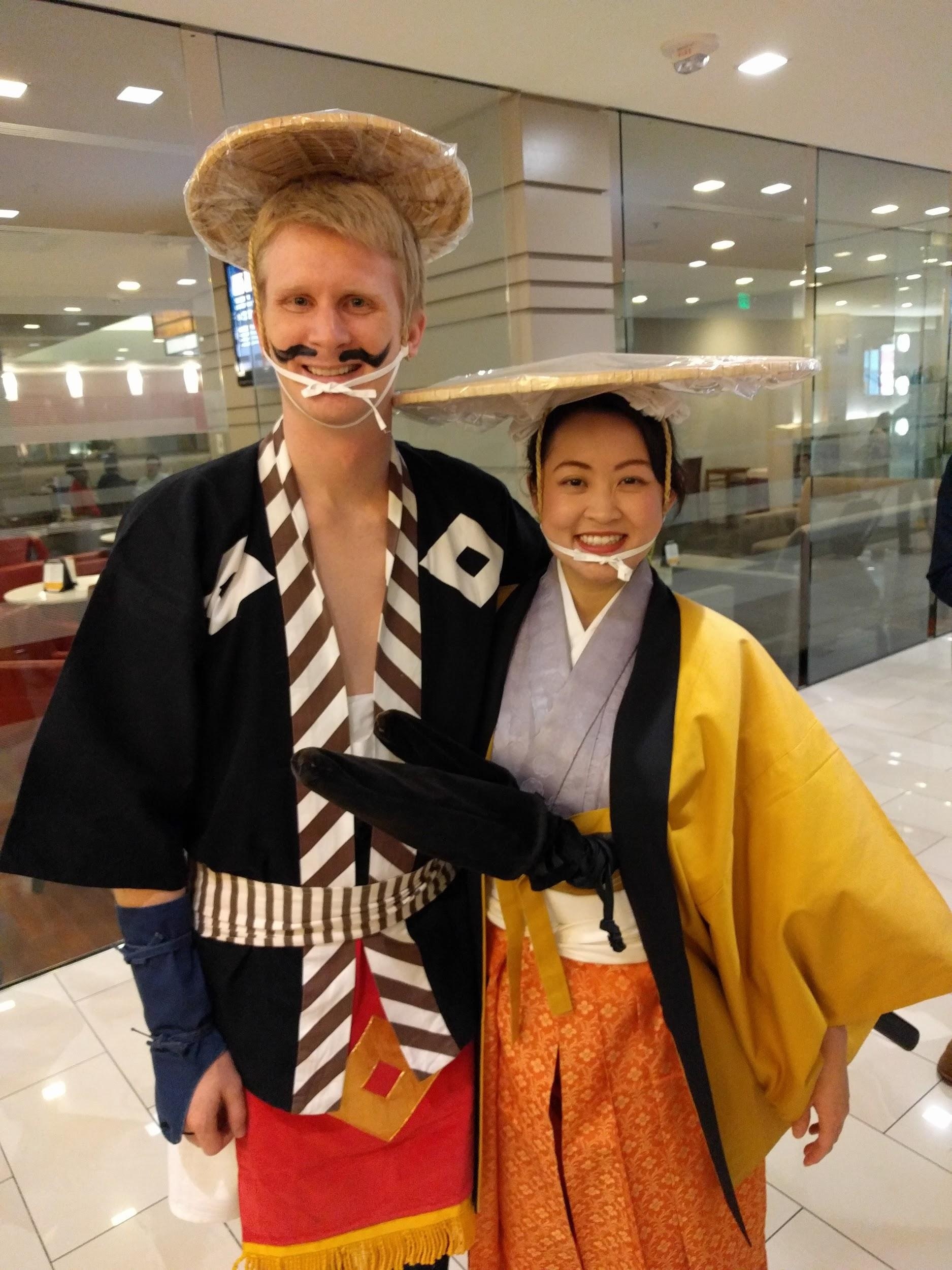 Melody and Gavin
Melody and Gavin
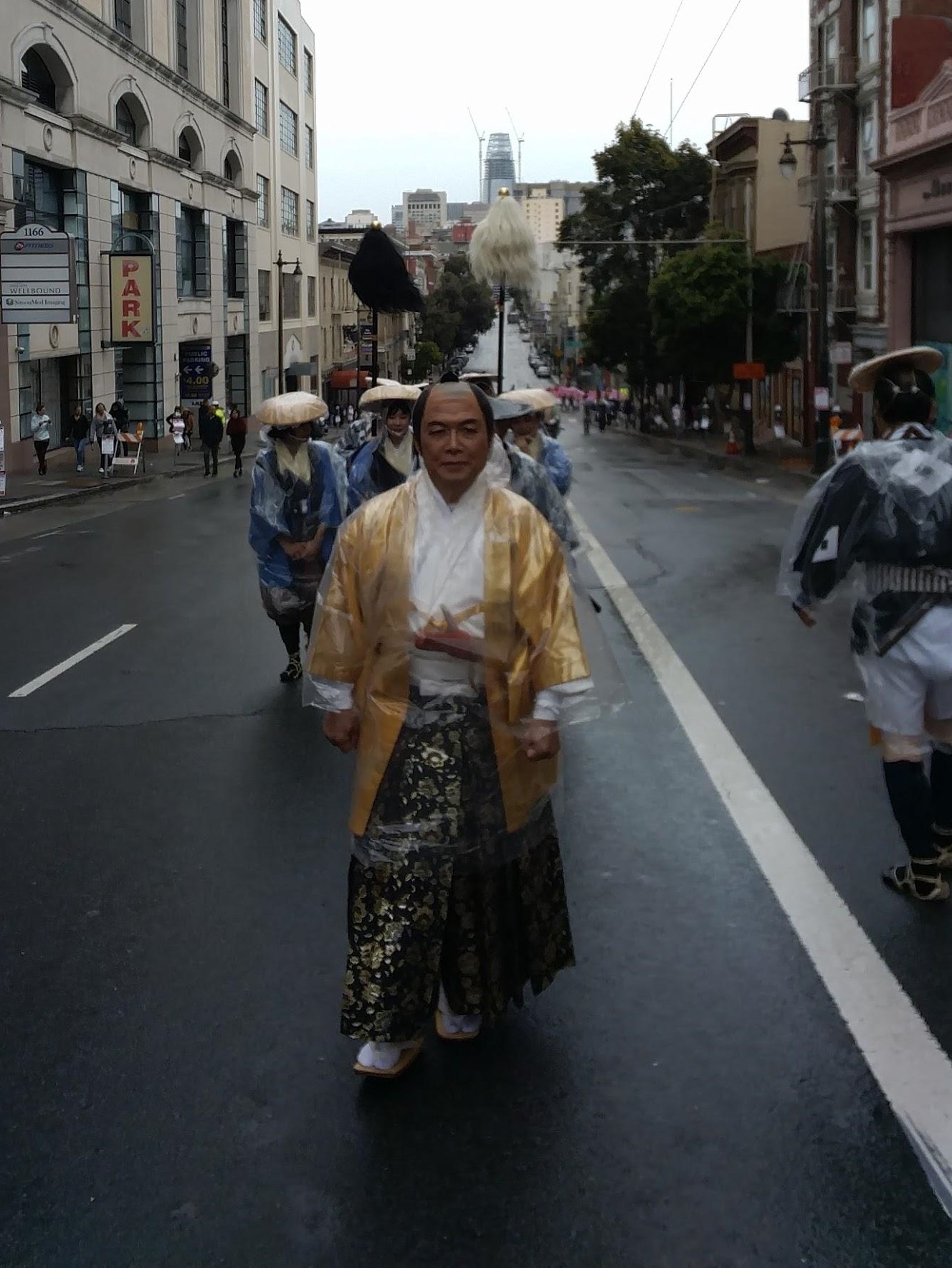 The Daimyo marching
The Daimyo marching
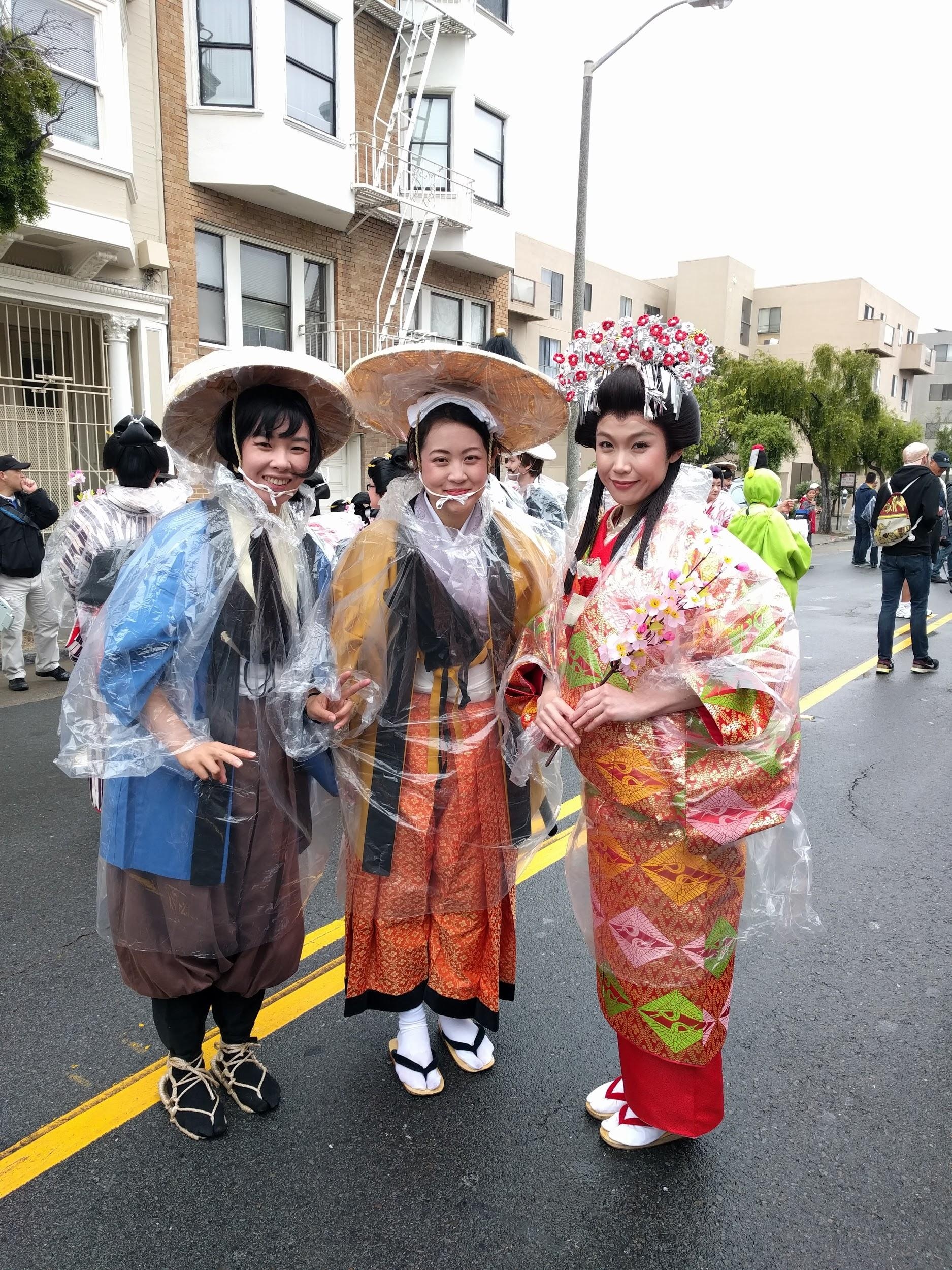 Melody with two other participants
Melody with two other participants
It was quite rainy on the day of the Grand Parade. We were shuttled to the Civic Center, where the parade was to begin. Amidst the wet weather, there was a stream of clamor and cheerful commotion all around. The taiko team was practicing their set, the princesses were getting ready on the floats, and our Yakage parade team stood gingerly in front of City Hall for a nice group picture.
We migrated back to the bus for a quick bento meal. Afterwards, several Japanese attendants draped us in clear ponchos before we headed out for the parade. Gavin and I sat toward the end of the bus with a man dressed as the daimyo, so we were the last to get poncho-ed. By the time the three of us got out, we didn’t see anyone else in our group and it looked like the parade had already started! All three of us walked as fast as we could in our traditional-looking Japanese slippers made of twine, weaving past bystanders and dodging giant wet puddles. Walking up the hill of Polk Street with fake samurai swords lodged up against my hip and trying not to slip wasn’t exactly the most fun, but it was certainly an experience. Finally, Gavin, the daimyo, and I saw our group in the distance, which happened to be at the very front of the parade. We quickly hopped in formation before the parade was to turn onto Post Street.
We migrated back to the bus for a quick bento meal. Afterwards, several Japanese attendants draped us in clear ponchos before we headed out for the parade. Gavin and I sat toward the end of the bus with a man dressed as the daimyo, so we were the last to get poncho-ed. By the time the three of us got out, we didn’t see anyone else in our group and it looked like the parade had already started! All three of us walked as fast as we could in our traditional-looking Japanese slippers made of twine, weaving past bystanders and dodging giant wet puddles. Walking up the hill of Polk Street with fake samurai swords lodged up against my hip and trying not to slip wasn’t exactly the most fun, but it was certainly an experience. Finally, Gavin, the daimyo, and I saw our group in the distance, which happened to be at the very front of the parade. We quickly hopped in formation before the parade was to turn onto Post Street.
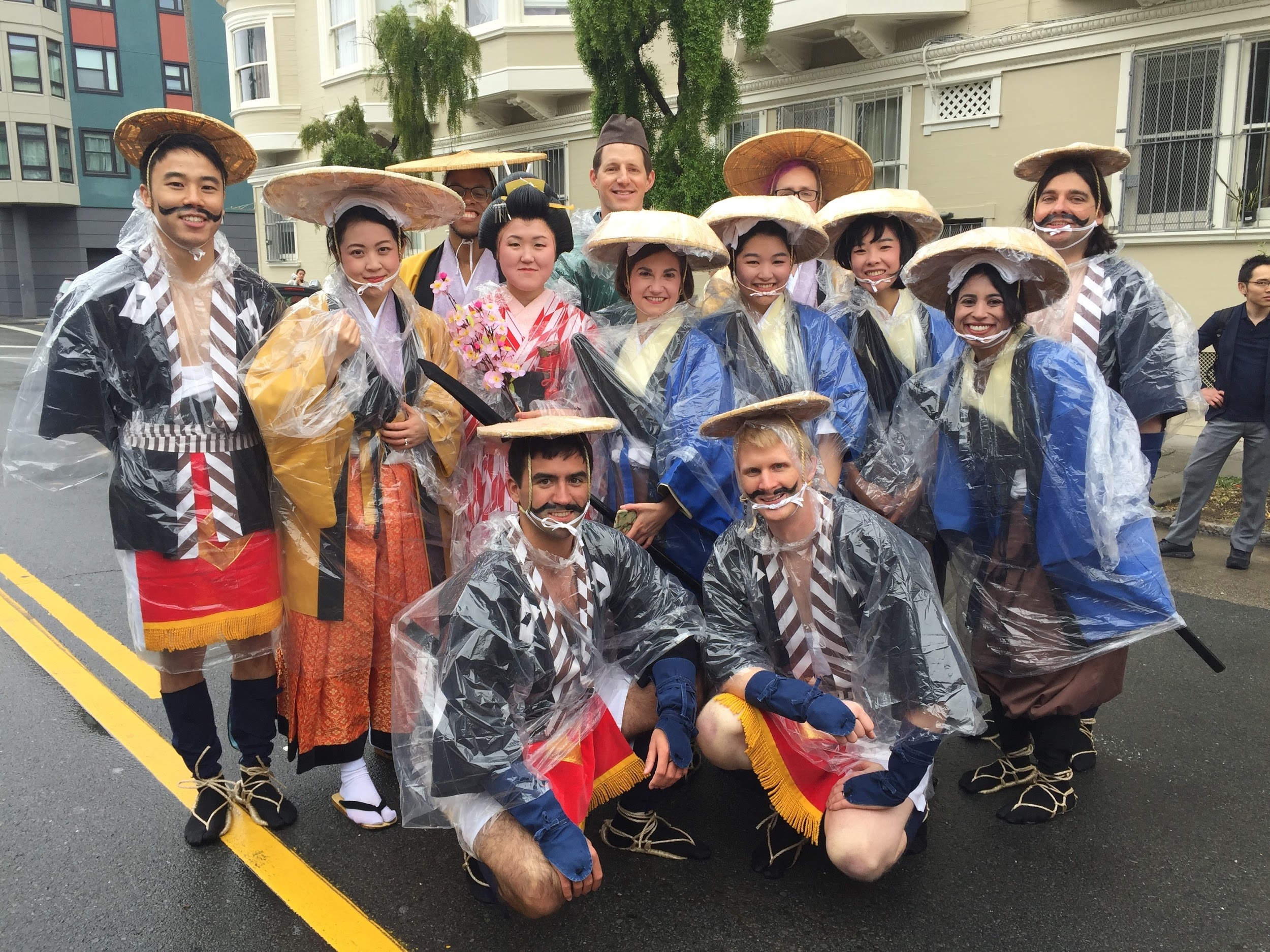 Group photo
Group photo
The remainder of the parade was nothing short of hilarious. We weren’t really given any direction on how to stand or what to do during the procession, so the group ended up walking however they wanted. The parade participants were taking pictures en route, having a great, casual time—very different from the slow, formal structure of the parade in Japan. As we got closer to larger crowds on Post Street, the organizing coordinator encouraged us to wave at people. My samurai walking partner, a Japanese lady who walked beside me, and I were instructed to keep a steady, slow pace since we were the two designated samurai to walk in front of the daimyo. Every so often, my walking partner would stop and pretend to draw her samurai sword in front of children. She was quite the entertainer—I had nothing on her.
One interesting contrast I found between Yakage’s procession and the San Francisco parade is that in Yakage, it’s customary to have an audio version of the chant shita ni shita ni, or “down down” blared over the town’s speakers during the procession. In San Francisco, there were no town speakers along the route, so we had a designated man who wore a speaker on his back that blared shita ni shita ni while he walked alongside us. By the second half of the parade, the audio started to weaken to the point where we only heard the ni—we were all chuckling out loud. Before we knew it, we passed Japantown and the parade was over. We all raised our arms and cheered at the great time we just had. Otsukaresamadeshita!
It’s been over 4 years since I left Japan, and this event brought back some really fond memories. It reminded me a lot of what I love about Japanese culture and my life abroad there—the camaraderie, the mannerisms, the traditions. And, though Yakage wasn’t the little town I lived in, it still fills my heart with pride to know that Okayama is recognized in a global way and I was honored to be part of this experience.
One interesting contrast I found between Yakage’s procession and the San Francisco parade is that in Yakage, it’s customary to have an audio version of the chant shita ni shita ni, or “down down” blared over the town’s speakers during the procession. In San Francisco, there were no town speakers along the route, so we had a designated man who wore a speaker on his back that blared shita ni shita ni while he walked alongside us. By the second half of the parade, the audio started to weaken to the point where we only heard the ni—we were all chuckling out loud. Before we knew it, we passed Japantown and the parade was over. We all raised our arms and cheered at the great time we just had. Otsukaresamadeshita!
It’s been over 4 years since I left Japan, and this event brought back some really fond memories. It reminded me a lot of what I love about Japanese culture and my life abroad there—the camaraderie, the mannerisms, the traditions. And, though Yakage wasn’t the little town I lived in, it still fills my heart with pride to know that Okayama is recognized in a global way and I was honored to be part of this experience.
